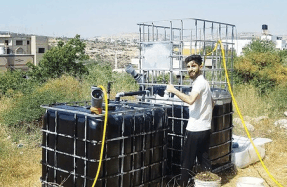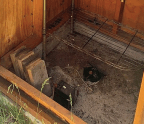
Waste management of pasture-raised animals is generally simple. When your herd is frequently moved around on a vigorous patch of perennial grasses, manure and urine spread thinly and evenly, making it easy for the ecosystem to absorb them. Unfortunately, in a temperate climate such as ours in Québec, animals that are kept all year long can’t be raised solely on grass.
Handling the waste of animals housed in closed-up buildings is somewhat of a chore. Stalls require daily additions of fresh bedding material, generating copious amounts of litter that’ll eventually need to be moved out and composted. I’ve always found keeping my laying hens penned up inside a small coop all winter long was less than ideal. On top of managing a lot of bedding and litter in a cramped space, it’s hard to keep everything clean and the hens chirpy.
These gloomy days are gone now. Since 2016, my spouse, Amélie, and I have been overwintering our 35 to 50 laying hens inside a sunny greenhouse. We call it the “coop-house.” Nov. 1 each year, our high tunnel becomes our flock’s winter quarters for five months. All winter long, the birds till the carbon-rich leaf mulch spread on the greenhouse’s dirt floor, adding their




